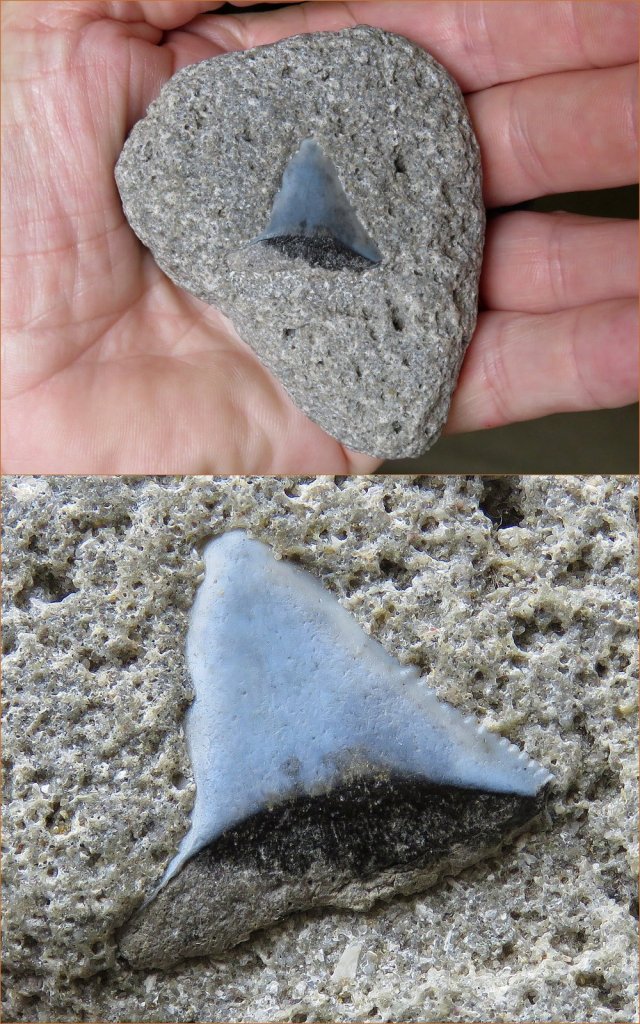Mr Roy Clarke of East London kindly presented a shark tooth to the museum for identification. It was found along the Cefane beach (Chintsa Bay) recently.
A close inspection of the specimen revealed that the tooth has started to fossilise (discolouration as one indicator) and was imbedded in some lithified coastal sandstone – not an uncommon geological feature in the area.

A 22-mm-tall fossilised great white shark tooth found by Roy Clarke. Photo: Kevin Cole
A comparison of the tooth shape and dimension assisted in the identification as that belonging to a Great White shark Carcharodon carcharias. Retired museum colleague Greg Brett was able to demonstrate the difference in the tooth shape of other shark species such as the tiger and raggie to name a few in confirming the identification. Distinctive here is the very equal (triangular) presentation of the 2.2 cm tall tooth.
The earliest known fossils of great white sharks are from the mid-Miocene period 16 million years ago.
